May 8, 2020
Our FoodPrints Anywhere theme for the month of May is Plant Science. This week we turn our attention to seeds. Not only do seeds grow new plants, they are also an important source of food. We eat the seeds of wheat, rice, beans and peas and more! In this edition, we help you make discoveries about seeds, learn how to make fried rice, and get creative with homemade bird feeders.
Have you been using our FoodPrints Anywhere activities? Please share your feedback by taking this short survey.

Fried Rice for the Family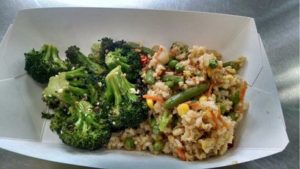
Did you know that when we eat rice we are eating the seed of the rice plant? The same rice we eat is what is planted to grow more rice.
> Learn how to make Fried Rice for your whole family. Using a flexible recipe and easy template, you will be able to whip up tasty fried rice in no time.
> If you are not sure how to make rice or want some practice, follow these simple steps to cook the perfect pot of rice.
> Watch Chef and Humanitarian Superhero, Jose Andres, cook fried rice with his daughters (Bonus- they cook along to Hamilton tunes)!
> Learn about how one pioneering farmer is growing rice near Washington, D.C.
Activity for Kids in the Kitchen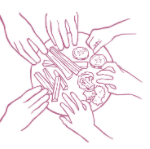
Rice is cooked and eaten by people all around the world. Across the globe, people have their own traditions around eating rice. How does your family eat rice?
> Draw & write about your family’s food traditions around cooking and eating rice (Younger Elementary). We can’t wait to hear about the special way your family enjoys rice!
> Interview someone special to you to learn about their favorite way of eating rice (Older Elementary).

WITS BITS
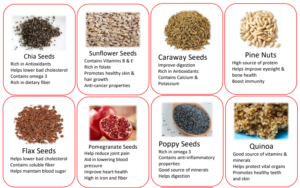
Seeds are not just for planting – when we eat them, they provide our bodies with healthy fats, fiber, protein, and cancer-preventing nutrients.
> Play a matching game to learn about the seeds we eat! Read through the list of seeds that you may find in the kitchen & try to match them with their common use.
> Check out neat facts about Super Seeds! You may be surprised by all of the seeds that keep us super healthy.

Sprout Seeds and Watch them Grow!
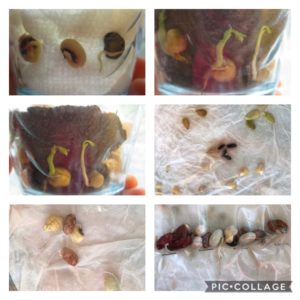
> You can search for seeds in your pantry and set up an experiment to see which ones will germinate (sprout). You can try dry beans, popcorn, rice, and whole spices.
- Find the seeds you want to use in your germination experiment. Soak the seeds you select overnight in cool water.
- Find a small, clear cup, jar, or bag to use as your viewer.
- Moisten a paper towel w/ water and place it so it sits along the inner edge of the cup/jar/bag.
- Put a few seeds between the damp towel and the glass/jar/bag. If using a bag, seal it. Don’t forget to keep the paper towel moist so your seeds continue to germinate!
- Put your root viewer in a sunny windowsill. Your seeds will germinate without sunlight, but they will need sunlight and soil to continue growing.
- Watch it grow! What plant parts do you see over time? Can you find roots? Do you see any stems or leaves?
> You can track the growth of your seeds in a journal or on a piece of paper. Check out this guide to “Become a Botanist” and track the growth of your seeds.
A botanist is someone who studies plants, and they observe their plants every day to study growth and changes. By tracking the growth of your seeds, you can be a botanist, too!

Seed Math
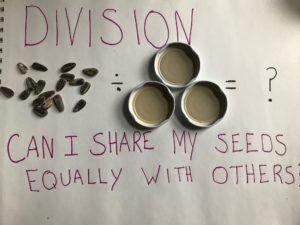
You can use seeds or any small snack that you have in your house (cheerios, raisins, grapes) to practice addition, subtraction, multiplication, and division problems.
> Learn how to practice solving math problems with seeds or your own small, nutritious snack. This is a fun and edible way to sharpen your math skills!

Recycled Container Bird Feeders
Recycle your empty milk or juice containers to make a bird feeder for our feathered friends!
> Follow simple steps to learn how to make a bird feeder out of a recycled milk or juice container.
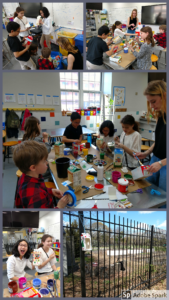
Team Up On Food Waste @ Home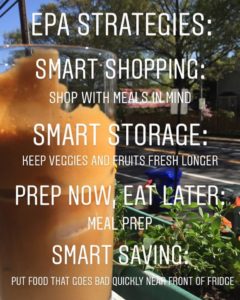
Week 4: This week’s goals to complete the Action Report, share what you’ve learned, and keep on learning!
- Finish recording 7 days of data on your Data Collection sheet.
- Submit your Action Report.
- Remember all data is interesting and there is no judgment!
Optional extensions:
- Make a short video answering the question “What did you get out of participating in the Team Up on Food Waste @ Home Challenge?” Upload your video here to be included in an upcoming video recognizing participants and winners.
- Share photos and stories on twitter #TUFW2020, on Instagram @teamuponfoodwaste, or by uploading it into the Recycle Leaders Share Photos folder.
- Reflect on your experience and compare with others. Consider collecting more data. The EPA recommends four weeks of action data collection to assess longer term impact.
- Check the Recycle Leaders Project Page for updates — resources will continue to be added after the official challenge ends.
- If you missed the official Earth Day 2020 Reduce Food Waste @ Home challenge, you can still do it at home with your household any time. Resouces and instructions are here.
Have you been using our FoodPrints Anywhere activities? Please share your feedback by taking this short survey.
FoodPrints Anywhere helps build nutrition knowledge, extend science and math education, and helps families cook and eat FoodPrints recipes together at home.
